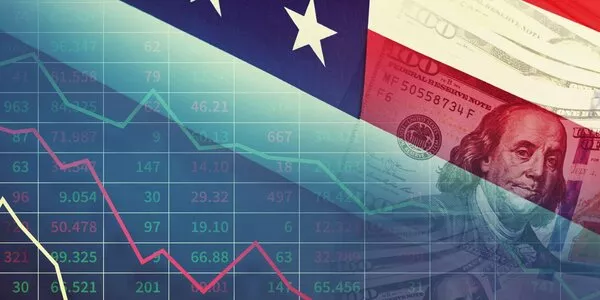
Weekly Update - Federal Reserve started its rate cut cycle with a bang
Federal Reserve started its rate cut cycle with a bang. The Federal Reserve (Fed) has decided to start its monetary easing cycle with a marked 50 basis points cut in its interest rates. While other major central banks retain a more gradual approach, the global monetary easing cycle is now well underway. Financial markets are now increasingly focusing on the interest rate level at which central banks will stop their rate cut cycle.
The beginning of the interest rate cut cycle is confirmed.
Having ended its rate hike cycle more than a year ago, the Fed this week fully acknowledged the end of the post-Covid strong inflation episode. In their updated forecasts, the members of the monetary policy committee anticipate a quicker return of inflation towards the 2% target. They also expect a stabilisation of the unemployment rate around the current level. Although the Fed started its cycle with a marked decrease in its rates, it plans to continue its adjustment with more contained reduction of 25 basis points (bp) at each of the next two meetings in 2024, followed by a decrease of 100 bp in 2025 and 50 bp in 2026. The pace and magnitude of the rate cuts will of course depend on the evolution of inflation and economic activity. Markets still anticipate a faster downward movement, with nearly 75bp by the end of the year and 125bp in 2025
A more gradual approach for central banks in Europe.
The Bank of England (BoE) has decided to maintain the status quo, while the European Central Bank (ECB) lowered its rates by 25 bp last week. In Europe, central banks started their rate cut cycle earlier (as early as March for the Swiss National Bank), but they also communicated on a pace of slow-but-steady rate cuts, in a context where domestic inflation remains high and sticky
Financial markets remain confident about growth. In most rate cut cycles in the past, central banks were cutting rate when facing a marked deterioration in economic activity, such as the financial crisis of 2008 or Covid in 2020. Today, the situation appears different, with central banks adjusting their monetary policy due to the normalisation of inflation, while the economic activity remains resilient.
In other words, central banks are not seeking to avoid a recession but to decrease the restrictive nature of their monetary policies. They are in a gradual process of reducing their real rates (deflated by inflation) towards levels more in line with their long-term average. The rate cut cycle would support economies, particularly through a recovery in credit activity. In such a favourable scenario for activity, equity markets continue to display positive performances.
Bond markets also show positive performances, with the continuation of the fall in long-term interest rates. Parallel to what happened during the rate hike cycle, markets are now focusing on the speed of the rate cut cycle and the level of the terminal rate (the rate that will be reached at the end of this cycle)
Other highlights of the week
In the highlights of the week, we chose to talk about French Growth as well as BoJ Interest Rate Decision :
FRANCE: Upward revisions to growth despite political and budgetary uncertainties. According to the latest Bank of France’s publication of its French macroeconomic forecasts, the confirmed drop in inflation should boost households’ purchasing power, as nominal wage growth is higher than inflation. Growth forecasts have been revised upwards to +1.1% for the year (+0.8% estimated last June), but due to the Olympics boost and strong net exports. Nevertheless, growth is expected to slow in the fourth quarter. In addition, deteriorated public finances amidst political uncertainties continue to raise questions.
JAPAN: towards further rate hikes by the BoJ. Unlike at the end of July, the Bank of Japan (BoJ) did not surprise the markets this time, keeping its key rates unchanged at 0.25% this week. But total and core inflation (published on the same day) continued to rise in August (from 2.8% year-on-year to 3% and from 1.9% to 2% respectively). The BoJ has indicated that if the economy and inflation evolve in line with its forecasts, it will continue to adjust its monetary policy. It also highlighted the recent dynamism of household consumption, supported by rising wages. As a result, further rate hikes by the BoJ can be expected between now and the end of the year.




